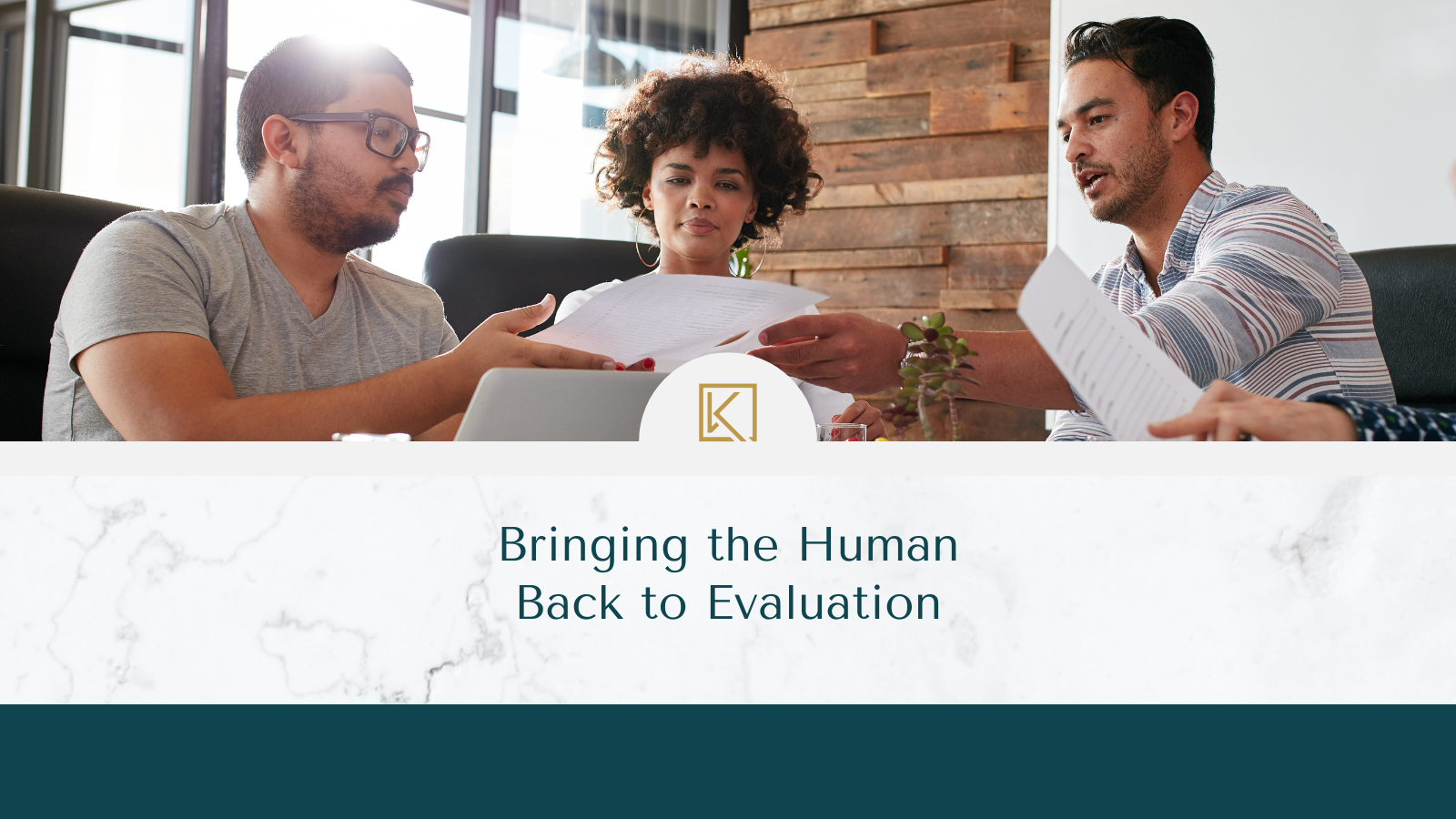Bringing the Human Back to Evaluation

Have you ever felt like you’re drowning in a sea of data and tech tools when it comes to evaluating your learning and development efforts? It’s normal in today’s fast-paced world where technology seems to rule the roost. But guess what? Evaluation isn’t just about crunching numbers and analyzing graphs. Nope, it’s all about people – understanding what they need, helping them grow, and building those oh-so-important connections.
Start with “Why”
Picture this: you’re starting a new project or initiative. What’s the first thing you should do? Well, according to the evaluation gurus (and common sense), it’s all about asking yourself why you’re doing it in the first place. What’s the problem you’re trying to solve? What does success look like to you? By getting clear on these questions upfront, you set yourself up for success and make sure you’re not just spinning your wheels.
See the Big Picture
We all know how easy it is to get lost in the day-to-day grind of tasks and deadlines. But sometimes, it’s important to take a step back, remove those metaphorical “Fed hats,” and look at the big picture. Instead of seeing evaluation as a boring checklist of Levels 1-4, why not imagine it as a beautiful, interconnected ecosystem? By zooming out, you can unlock creative solutions that are tailor-made for you and your learners.
Bring in the Human Voice
Sure, data and analysis have their place, but there’s nothing quite like hearing directly from the people you’re trying to help. Whether it’s chatting with supervisors, listening to graduates’ stories, or simply reading body language, human connections are where the real magic happens. So next time you’re knee-deep in spreadsheets, don’t forget to pick up the phone or schedule that coffee chat. You won’t regret it.
Collaborate for Innovation
Last but not least, let’s talk about teamwork. We all know that two heads are better than one, right? Well, the same goes for evaluation. Instead of working in silos, why not reach out and collaborate with folks from different organizations and backgrounds? You’ll be amazed at the fresh perspectives and innovative ideas that come out of those brainstorming sessions.
Embrace Flexibility and Adaptability
In the ever-changing landscape of learning and development, flexibility is key. What works today might not work tomorrow, and that’s okay. Embracing a mindset of adaptability allows us to pivot when needed and stay ahead of the curve. Whether it’s adjusting evaluation methods to suit new learning platforms or incorporating feedback to refine our approaches, being flexible ensures that we’re always meeting the evolving needs of our learners.
The future of evaluation is bright. By keeping humans at the heart of our work and staying true to our “why,” we can create real change that impacts lives. So let’s roll up our sleeves, embrace our inner evaluators, and get ready to make some magic happen!
Ready to learn more? Check out the latest episode of The Kirkpatrick Podcast as Vanessa Alzate and Jim Kirkpatrick welcome Amber Holt Gottman from the Special Warfare Training Group to share valuable insights on the modern feedback program at AETC in the defense industry.
Listen or watch the latest episode here:
Don’t forget, the true magic happens when we modernize our training methods and see concrete results. Cultivating an environment of trust, active participation, and continuous enhancement increases the likelihood of our training programs’ success.
Interested in mastering the Kirkpatrick Model? Dive into the Kirkpatrick Evaluation Toolkit, your comprehensive resource for streamlined and impactful evaluation. Learn more here!





